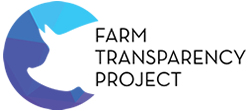Drug use
Chickens commonly have coccidiostats put into their feed. Coccidiostats are a nicarbazin which is an antibiotic type drug used frequently in the broiler industry. Traditionally they are used to treat coccidiosis (a parasitic disease resulting from infestation of the alimentary canal). Often birds pass small numbers of oocysts in their faeces without negative effects. Coccidiosis becomes important when animals live in conditions that permit the build-up of oocysts (in the faeces) in the environment, for example, the intensive farming of chickens.

Coccidiostats are routinely used in the broiler industry to avoid the common disease coccidiosis. Coccidiostats are even commonly included in chicken feed as a preventative measure. The build-up of infected faeces is a welfare and mortality concern. The disease is far less likely to occur in animals that are not exposed to overcrowded living conditions soiled with faeces.
There is a second, far less discussed reason for putting coccidiostats into the feed - some coccidiostats (lasalocid and monensin) also act as ionophores - increasing feed efficiency and weight gain. The drug disrupts the natural flora of the gut enhancing feed absorption and allowing faster weight gain. In other words, it promotes rapid growth. Routine use of coccidiostats were banned in Europe in 2006.
Salinomycin is also regularly found in chicken feed at broiler farms. Salinomycin is a polyether, an antibiotic type drug, and is also used for the prevention of coccidiosis. Salinomycin increases nutrient absorption across cell membranes in the gut and can lead to an increase of 62% mean body weight compared to chickens who are not fed salinomycin.


